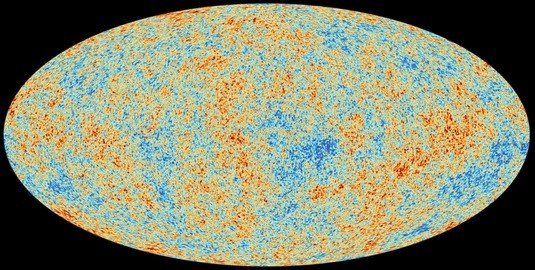When we look at mountains, rocks, and minerals today, it may seem as if they have always been there. Yet modern science shows that the universe has a definite beginning, and the matter we see around us – including ourselves – has gone through long and complex stages before reaching its present form.
1. The Big Bang and primordial nucleosynthesis
Around 13.8 billion years ago, the universe began from an extremely hot and dense state in what is known as the Big Bang. In the first seconds and minutes, no stable atoms existed, only a hot plasma of fundamental particles. Within the first three minutes, primordial nucleosynthesis took place: producing light elements such as hydrogen (~75%), helium (~25%), and trace amounts of lithium-7. Beryllium-7 also formed but decayed into lithium-7. Stable beryllium-9 did not form in significant amounts (Welt der Physik, 2023).
2. Birth of stars and stellar nucleosynthesis
Hundreds of millions of years later, the first stars formed through the gravitational collapse of primordial gas. In their hot cores, nuclear fusion began, fusing hydrogen and helium into heavier elements such as carbon, nitrogen, and oxygen, up to iron (Fe-56), the most stable nucleus (DK, 2023).
Elements heavier than iron required additional processes:
- s-process (slow neutron capture): inside red giant stars, where nuclei gradually capture neutrons.
- r-process (rapid neutron capture): during supernova explosions and neutron star mergers, providing extreme conditions for producing heavy elements like gold and uranium (Welt der Physik, 2023).
3. “We are made of stardust”
The famous phrase “We are made of stardust” is not a metaphor but a literal scientific fact. Every atom in our bodies – from the carbon in our cells, to the oxygen we breathe, to the iron in our blood – was forged inside stars or in their violent deaths (DK, 2023; Welt der Physik, 2023).
4. Nuclear astrophysics
The field of nuclear astrophysics seeks to describe these processes quantitatively. It requires combining knowledge of:
- Nuclear structure (nuclear physics),
- Stellar fluid dynamics (energy and mass transport inside stars),
- Plasma physics (behavior of matter under extreme heat and density).
This integration allows scientists to explain the distribution of elements in the universe and trace the evolution of stars, planets, and galaxies.
📚 References:
- Dorling Kindersley (DK): Rocks & Minerals – The Definitive Visual Guide, Munich 2023.
- Welt der Physik: Entstehung der Elemente. Published by DPG & BMBF. www.weltderphysik.de

European Space Agency
ESA – Planck’s view of the cosmic microwave background
